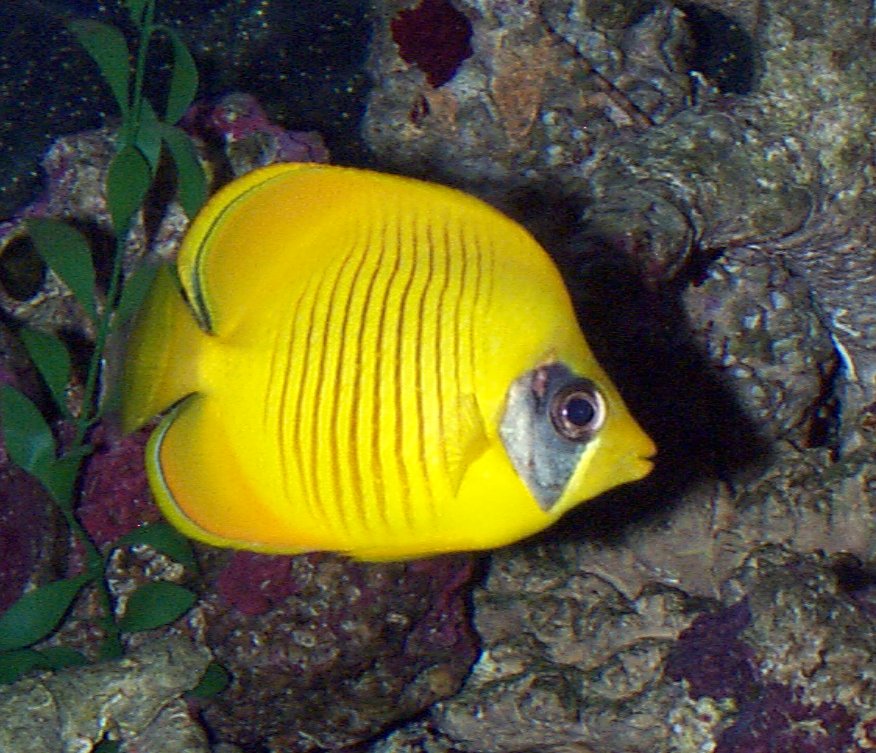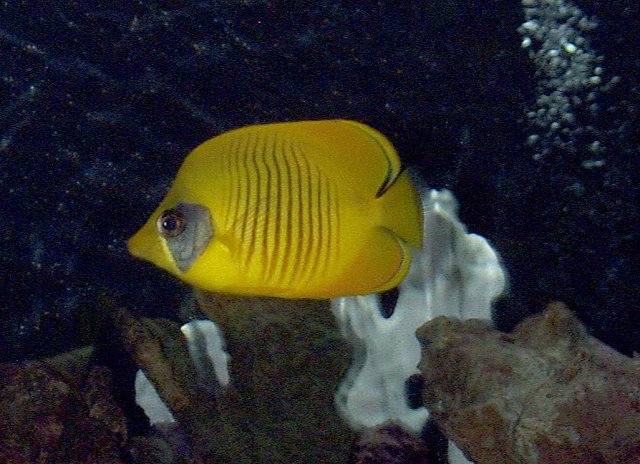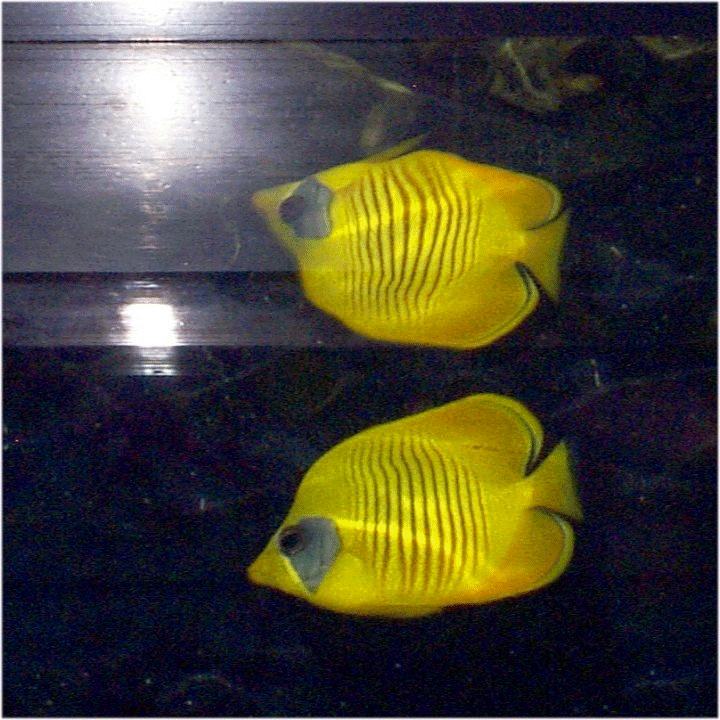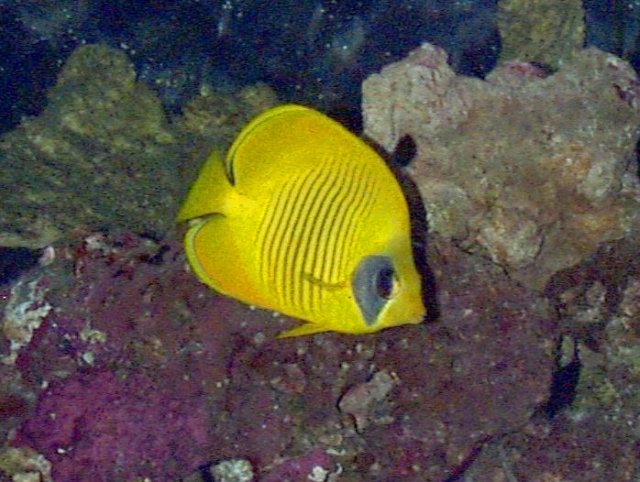General information:
The large pectoral fins of the butterfly fish allow them to "jump"
up from the water and through the air, giving them the appearance of flying,
thus the name "butterfly." The butterfly fish is generally found
floating at the top of the water where it appears to hang from the surface.
This makes it convenient for them to reach their food supply, which consists
mainly of flying insects. To an insect that suddenly finds itself
the prey of a golden fish charging out of the water, the fish may
look more like the tiger its stripes suggest rather than a butterfly.
These fish are normally found in pairs, although in captivity, it is
suggested that they not be kept in the same tank unless one is much smaller
than the other. Some species appear to be monogamous. Courtship
is enthusiastic, ending with mating at dusk. Butterfly fish are egg-layers,
and the eggs develop free in the water without parental care. In
many species of butterflyfish, the young are a different color from their
parents.
The young larvae are of a type unique to butterflyfish -- "tholichthys
larvae" -- and look much like small insects themselves. The head
is armored, with plates projecting from the head toward the back.
These larvae grow to a few centimeters across and then transform
into a tiny miniature of the adult.



